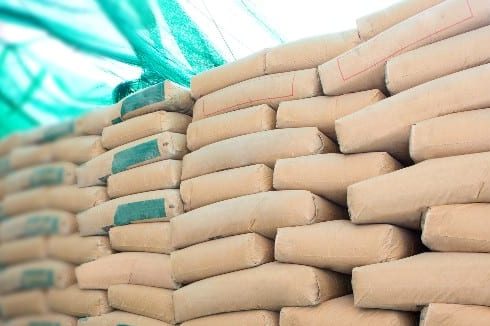Nigeria’s cement industry is grappling with a steep escalation in operating costs, as combined production expenses for its three largest players surged to ₦1.36 trillion in the first half of 2025 up from ₦1.19 trillion a year earlier.
The jump, driven by stubborn inflation and volatile energy prices, has squeezed profit margins despite record-breaking revenues. Industry data from the Nigerian Exchange Limited (NGX) reveal that Dangote Cement Plc, Lafarge Africa Plc, and BUA Cement Plc all reported significant increases in input costs, while also shouldering a heavier tax burden. The sector’s combined tax bill climbed 77.4% to ₦310.5 billion, reflecting improved profitability but eroding net earnings.
Dangote, Africa’s largest cement producer, bore the brunt of the cost pressures, recording ₦853.6 billion in manufacturing expenses, with fuel and power alone consuming ₦387.2 billion. Lafarge’s production costs leapt nearly 50% to ₦221.2 billion, while BUA’s rose 15.6% to ₦294.5 billion, both citing spikes in raw material and energy outlays.
Selling and distribution expenses also ballooned up 25.8% to ₦553.9 billion across the sector as logistics disruptions and higher transport costs took their toll. Lafarge’s distribution costs surged 44.3% to ₦77.4 billion, and BUA’s soared 82.9% to ₦29.8 billion. Dangote, while managing a modest 4.2% reduction in haulage expenses, still posted a 10.5% rise in overall selling and administrative costs to ₦445.7 billion.
Paradoxically, the sector delivered its strongest profits on record. Combined profit after tax hit ₦834.5 billion, a 266% leap from ₦227.5 billion in the same period last year. Dangote led with ₦520.5 billion, up 174%, followed by BUA at ₦180.9 billion (up 428%) and Lafarge at ₦132.7 billion (up 352%). Revenues climbed 38.3% to ₦3.17 trillion, buoyed by price adjustments that helped offset inflationary pressures.
Dangote’s CEO, Arvind Pathak, lauded the group’s “resilience and adaptability” in the face of macroeconomic challenges, pointing to strategic investments such as the phased deployment of 1,600 CNG-powered trucks to cut logistics costs.
Still, volumes slipped. Total industry sales fell 5.3% to 22.8 million tonnes, with all three players citing weaker real estate activity, slower government projects, and subdued consumer demand.
Capital expenditure for the half year reached ₦258.1 billion, channeled into plant expansions, fleet upgrades, and energy efficiency projects. Sector assets rose 3.5% to ₦8.7 trillion, underscoring continued long-term investment despite short-term headwinds.
Looking ahead, Lafarge Africa CEO Lolu Alade-Akinyemi stressed the need for agility in a shifting economic climate, saying the sector would “continue delivering value by leveraging innovation and sustainable growth.”



